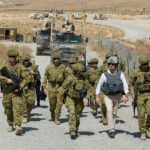Too good to be true?
US-president Obama has praised Australia for tightening its gun laws. Dr Samara McPhedran argues that the United States should be sceptical of Australia’s approach to gun control.
The United States continues its struggle to develop meaningful ways to reduce firearm-related deaths. Some argue that – despite differences in society, history, and culture – the United States can learn from Australia’s experience with gun control. But these suggestions are typically made without genuine consideration of scientific evidence.
Various different research groups have studied Australia’s gun laws. None has found a significant impact of the legislative changes on the pre-existing downward trend in firearm homicide (e.g., (1) – (5)). The decline in firearm homicides in Australia is not unique, with other Commonwealth countries experiencing similar or greater declines over time, despite less restrictive legislative approaches to firearms control (3).
Like the United States, most firearm-related deaths in Australia are suicides. Whether or not Australia’s gun laws affected suicides is uncertain. Some studies find an impact (1) (4) (5), others find little or no evidence of an impact and/or substitution to other suicide methods (2) (6) (7). Adding to this complexity, suicides across the board (irrespective of method) declined after 1997. This coincided with national implementation of a wide range of suicide prevention strategies.
There were broader social changes occurring around that time, too, including the start of a long period of economic growth and low unemployment. Disentangling effects of legislative changes, from those of multiple other interventions and social changes that occurred around the same time, is extremely difficult.
Proponents of Australia’s gun laws often claim that removal of semi-automatic longarms (rifles and shotguns) from private ownership has prevented mass shootings. However, our close neighbour New Zealand – similar to us in history, culture, and economic trends – has experienced an almost identical time period with no mass shootings despite continued widespread availability of the firearms Australia banned (8). The absence of mass shootings in New Zealand alongside ongoing availability of semi-automatic firearms for target shooting and hunting cannot be reasonably attributed to pre-existing differences between the two countries: data controlling for population size differences show the occurrence of mass shootings before 1996/1997 was comparable between countries (8).
The balance of evidence suggests Australia’s legislative changes are simply not the “too good to be true” success story some commentators want them to be, and it has recently been proposed that Australia’s gun laws do not represent a cost-effective way of preventing injury (9). But despite what the science tells us, the Australian experience with firearms legislation will no doubt continue to be a source of argument, here and elsewhere. In an ideal world, this contest of ideas would result in more effective policies to address violence (whether towards the self or to others). Sadly, based on this author’s experience from years working in the field, it appears there is entrenched resistance in some quarters – including many peer-reviewed scientific publications – to allowing balanced debate (10).
The United States can indeed learn from Australia, but the most valuable lesson is not about gun laws. It is about the quality of public debate and how science shapes that debate. Disappointingly, the Australian experience is characterised by attempts to silence debate and censoring, or trying to discredit, scientific findings that do not fit the ‘received view’ about gun laws (10). It is understandable that some may find evidence showing a lack of impact of Australia’s gun laws unwelcome and seek to dismiss those findings by any means possible. But critical inquiry and willingness to engage in robust and honest debate remain the foundation of good science and effective injury prevention. Only through having such debate can the United States hope to arrive at genuinely informed strategies to reduce gun violence.
References
1. Baker J, McPhedran S. Gun laws and sudden death: did the Australian firearms
legislation of 1996 make a difference? Br. J. Criminology. 2007; 47:455-69.
2. Lee W-S, Suardi S. The Australian firearms buyback and its effect on gun deaths. Contemp. Econ. Policy. 2010; 28(1):65-79.
3. McPhedran S, Baker J, Singh P. Firearm homicide in Australia, Canada and New Zealand: What can we learn from long-term international comparisons? J. Interpers. Vol. 2011; 26(2): 348-59.
4. Leigh A, Neill C. Do gun buybacks save lives? Evidence from panel data. American Law and Economics Review. 2010;12:462-508.
5. Ozanne-Smith J, Ashby K, Newstead S, et al. Firearm related deaths: the impact of regulatory reform. Inj. Prev. 2004; 10: 280-86.
6. De Leo D, Dwyer J, Firman D, Neulinger K. Trends in hanging and firearm suicide rates in Australia: Substitution of method? Suicide and Life-Threatening Behav. 2003; 33(2): 151-64.
7. Klieve H, Barnes M, De Leo D. Controlling firearms use in Australia: Has the 1996 gun law reform produced the decrease in rates of suicide with this method? Soc. Psychiatry and Psychiatric Epidemiol. 2009; 44: 285-92.
8. McPhedran S, Baker J. Mass shootings in Australia and New Zealand: a descriptive study of incidence. Justice Policy J.; 8(1).
9. Vos T, Carter R, Barendregt J, et al. Assessing Cost-Effectiveness in Prevention (ACE-Prevention): Final Report. University of Queensland, Brisbane, and Deakin University, Melbourne. 2010.
10. McPhedran S, Baker J. Supplemental submission to the Senate Community Affairs References Committee Inquiry into Suicide in Australia.
Dr Samara McPhedran holds a PhD in Psychology, and has published extensive research in the fields of firearm violence and injury prevention. She is currently the Chair of the International Coalition for Women in Shooting and Hunting (WiSH).












